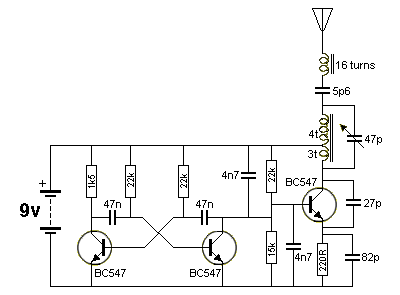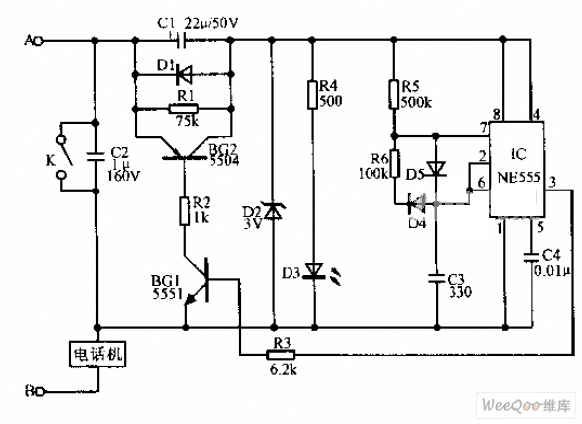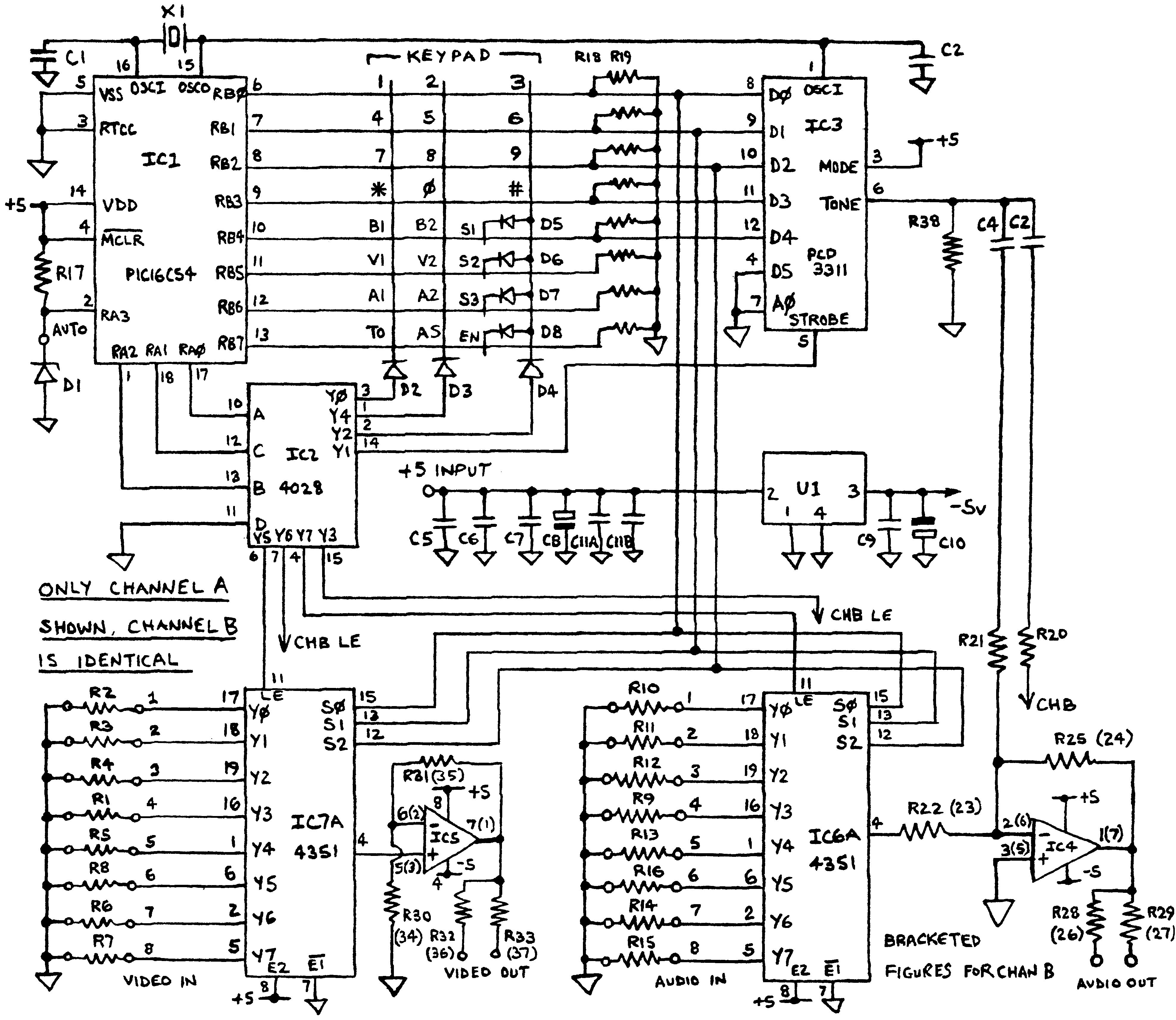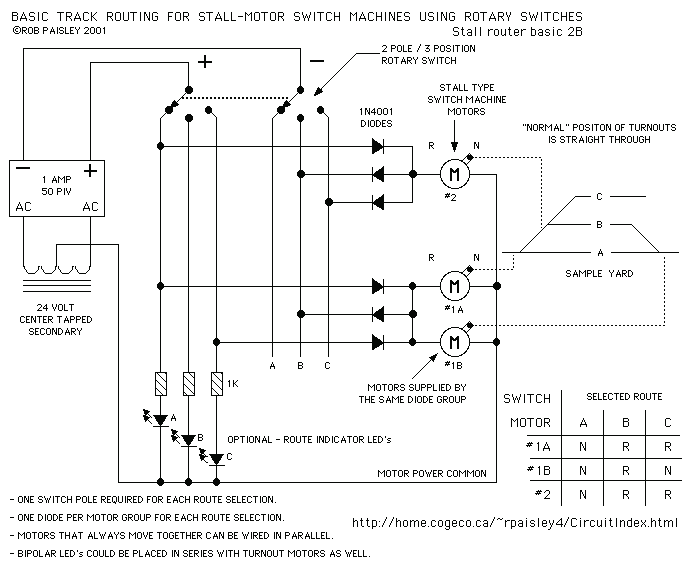
Light activated switch circuit
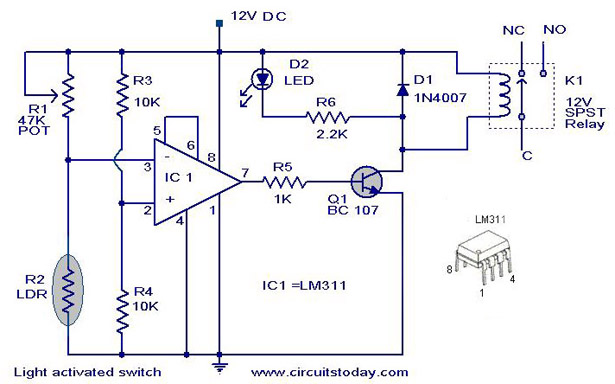
A simple light-activated switch circuit with a diagram and schematic using IC LM311 wired as a voltage comparator and an LDR that acts as a light sensor.
The described circuit utilizes the LM311 integrated circuit, which functions as a voltage comparator, to create a light-activated switch. The Light Dependent Resistor (LDR) serves as the primary sensor, responding to variations in light intensity. When the ambient light level falls below a certain threshold, the resistance of the LDR increases, resulting in a voltage change at the input of the LM311.
In this configuration, the LM311 compares the voltage across the LDR with a reference voltage set by a voltage divider composed of fixed resistors. The output of the LM311 is configured to switch on or off a connected load, such as an LED or relay, depending on the light level.
To construct this circuit, the following components are typically required:
- LM311 IC
- LDR (Light Dependent Resistor)
- Fixed resistors for the voltage divider
- A capacitor (optional for stability)
- A load (e.g., LED, relay)
- Power supply (typically +5V to +15V)
The circuit operates as follows:
1. The LDR is connected in series with a fixed resistor to form a voltage divider. The junction between the LDR and the resistor provides a variable voltage that changes with light intensity.
2. The output of this voltage divider is connected to one of the input pins of the LM311, while the other input pin is connected to a stable reference voltage.
3. When the light level decreases, the voltage from the voltage divider drops below the reference voltage, causing the LM311 to switch its output state.
4. The output can be used to drive a transistor or relay, which in turn activates or deactivates the load.
This circuit is widely applicable in automatic lighting systems, security alarms, and other light-sensitive applications, providing a simple yet effective solution for light-activated control.A simple light activated switch circuit with diagram and schematic using IC LM 311-wired as a voltage comparator and an LDR that acts as light sensor. 🔗 External reference
The described circuit utilizes the LM311 integrated circuit, which functions as a voltage comparator, to create a light-activated switch. The Light Dependent Resistor (LDR) serves as the primary sensor, responding to variations in light intensity. When the ambient light level falls below a certain threshold, the resistance of the LDR increases, resulting in a voltage change at the input of the LM311.
In this configuration, the LM311 compares the voltage across the LDR with a reference voltage set by a voltage divider composed of fixed resistors. The output of the LM311 is configured to switch on or off a connected load, such as an LED or relay, depending on the light level.
To construct this circuit, the following components are typically required:
- LM311 IC
- LDR (Light Dependent Resistor)
- Fixed resistors for the voltage divider
- A capacitor (optional for stability)
- A load (e.g., LED, relay)
- Power supply (typically +5V to +15V)
The circuit operates as follows:
1. The LDR is connected in series with a fixed resistor to form a voltage divider. The junction between the LDR and the resistor provides a variable voltage that changes with light intensity.
2. The output of this voltage divider is connected to one of the input pins of the LM311, while the other input pin is connected to a stable reference voltage.
3. When the light level decreases, the voltage from the voltage divider drops below the reference voltage, causing the LM311 to switch its output state.
4. The output can be used to drive a transistor or relay, which in turn activates or deactivates the load.
This circuit is widely applicable in automatic lighting systems, security alarms, and other light-sensitive applications, providing a simple yet effective solution for light-activated control.A simple light activated switch circuit with diagram and schematic using IC LM 311-wired as a voltage comparator and an LDR that acts as light sensor. 🔗 External reference

